|
|
Apr 06, 2016
Nada Giuseppe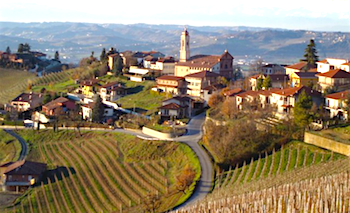
The Nada Guiseppe vineyards were established in 1900 in Treiso, one of the four Barbaresco DOCG zone villages in Piedmont, in northern Italy.
Nada holds nine hectares of estate vineyards in total, which includes the celebrated crus of Casot and Marcarini. The family sold their wine in bulk until 1964 when they began bottling under the Nada label. It was just prior the formation of the Barbaresco DOC, in 1966.
The current winery, built hillside in Marcarini, was built in 1968.
Additionally, the cru Casot vineyard is neighbor to that of Angelo Gaja, the Nada family acquired it from one of Gaja’s ancestors.
A site, I’m sure, Gaja would love to have back in the family again.
(photo above right courtesy of Nada)
Enrico Nada, son of Giuseppe, took over winemaking duties in 2008. He and his sister Barbara are members of the fifth generation and proudly continue the Nada lineage.
Recently Enrico made his first visit to Canada, where his importer, World Wine Synergy, introduced his wines over dinner at La Quercia on West 4th.
Nada produces roughly 45,000 bottles a year - primarily Barbaresco.
With a push from Enrico, they began to produce a white wine in 2009, which is grown on a prestigious southern exposure, higher altitude (200-500 meters above sea level) site, usually reserved for reds.
A bold move, but Enrico honed his skills with making white wine at a small neighboring producer's estate.
Not unheard of, at least in this part of the world, 2015 was an outstanding vintage. I’ve heard similar sentiments from other parts of Europe as well. 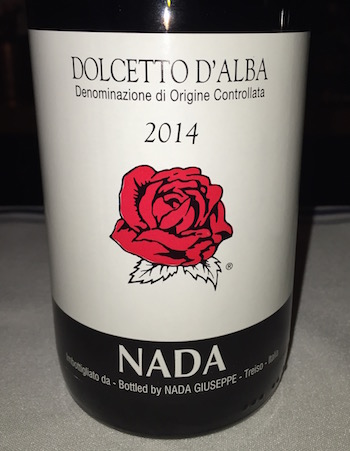
Enrico states, “It’s been one of the greatest vintages of the region.”
Nada is considered a traditional producer in the region. They prefer aging wines in large (500 plus liters) oak barrels, French Allier and Slovonian.
“The bottle that has reason stands empty on the table.”
~Enrico Nada quoting an Old Italian saying
Wines
Langhe Bianco ‘Armonia’ DOC, 2014 – Made from Arneis with Sauvignon Blanc this wine has a fresh and flinty nose with dried flowers, hay and faint crunchy white fruits. It is oily in texture, attractive in weight, with a racy finish substantiated by phenolic texture. 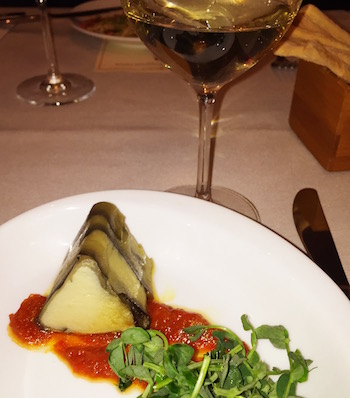
$24 +854034
Pairing: Creamy eggplant terrine (photo: right), bagna Cauda salad and fritto misto (photo: below)
Docetto d’Alba DOC, 2014 - Dolcetto is one of the most cultivated varieties in the region. Classic red plum and red cherry, with wood smoke and spice, earth and leather with a classic bittersweet finish. Dolcetto is meant to be vibrant and fresh but this one has a substantial character.
$23 +516757
Pairing: Porcini mushroom risotto
Langhe Nebbiolo DOC, 2013 – It is ruby in colour with browinish glints and aromas of sweet cherry and raspberry with roses and violets. Elegant and focused with impressive acidity and yet power. Fine but textural tannins and excellent persistence. $27 +418095
Pairing: Potato and fontina agnolotti del plin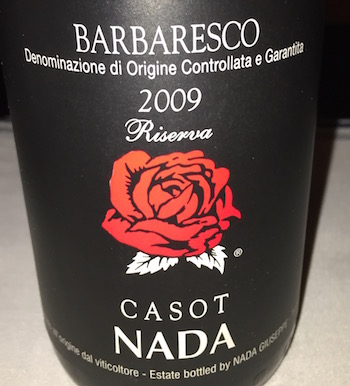
Barbaresco ‘Casot’ DOCG, 2013 – Expect a lovely, fragrant bouquet of roses and violets with cherry and wild red forest berries, tar, leather, ash and tobacco. It is silky and chic on the entry and blossoms into a powerful mid-palate with flavours of tangy red fruits, tobacco and fine spice. Outstanding.
Essentially, this wine, Casot is a monopole.
$52 +854950
Pairing: Ragu with local (Fraser Valley) truffle
*The 2009 'Casot' Riserva Barbaresco DOCG is tighter, and initially less aromatic on the nose. The palate is rounded, weighty and offers oodles of red and purple fruit, mineral and leather. A complex and complete with extensive length – age worthy for 20 years.
Pairing: Braised beef, potato puree and cheese platter
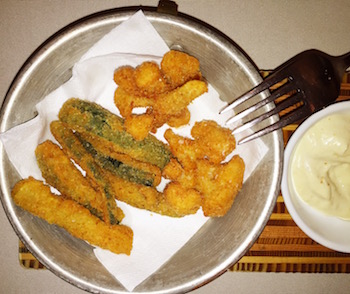 ~Daenna Van Mulligen ~Daenna Van Mulligen |
|
|


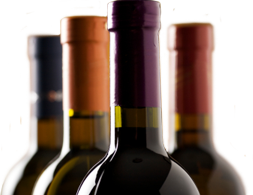






 ~Daenna Van Mulligen
~Daenna Van Mulligen